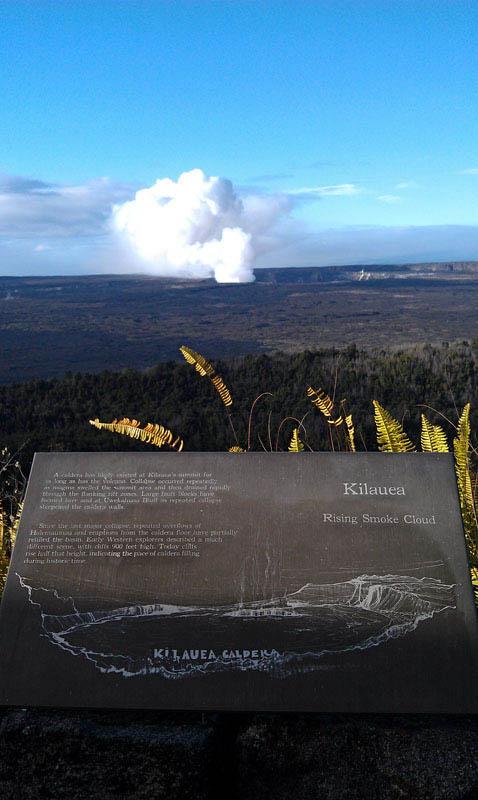
Perhaps the most visited place on Big Island, Hawaii Volcanoes National Park is unlike any other place found on the planet. With more than 30 destinations and over 100 miles of trails one could easily spend weeks inside the park and not see everything. Because of the sheer volume of things to do in Hawaii Volcanoes National Park, getting the most out of your visit requires some planning. This post will cover a few of the highlights and recommendations for a full day visit to the park. Keep in mind that this will only cover a small portion of what the park has to offer. Your best resources when visiting the volcano are the park’s website before you go and the park rangers once you arrive. These will inform you of current park conditions, road closures, and volcanic activity which will affect what you’ll decide to do once you get there.
Everyone’s first stop in the park is the visitor’s center where you’ll get a good introduction to the volcano and the science behind it. A short introductory film about Kilauea volcano and the park itself plays on a loop in the theater here. It’s somewhat old, but the information is still valid and it’s a good way to start your day before venturing out.
Halemaumau crater is the logical next step after the visitor’s center. This is the heart of Kilauea Volcano with its characteristic smoke plume rising above the hidden lava lake below. The crater can be viewed from a number of places along crater rim drive. Following this road you’ll pass steam vents and sulfur banks before arriving at the Jaggar museum where the road reaches its current terminus. The Jaggar museum gives the history of the area and explains volcanology in Hawaii. This is another must-see if you’re interested in the science and history of the volcano.
After experiencing the caldera and the surrounding area you can continue exploring Kilauea and head down Chain of craters road to see the Thurston lava tube and the east rift zone or you can head to the other half of the park on the side of Mauna Loa, the largest volcano in the world.
There are numerous environments in the park including rain forest, desert, upland dry forest, alpine, and coastal. Most people who spend a day here spend their morning around Kilauea caldera and their afternoon exploring the farther reaches of the park. If you choose to drive
around there are three main roads to choose from.
Chain of Craters road is the longest and will take you 45+ minutes to reach the end. There are numerous hikes that connect to this road in many places. Along the way you’ll get stunning views of the lower reaches of the park and you’ll pass many craters and lava fields. The road ends at the coastline in the east where it was covered by lava in 2003. Down here you’ll find fresh lava fields stretching for miles. If lava is flowing and you plan to view it from within the park this is most likely where you’ll begin your long hike out to it.
Hilina Pali Road is another scenic drive that branches off from chain of craters and takes you through the starkly beautiful Kau desert. This drive is punctuated by hilly terrain, low shrubs, and pink/orange desert rocks that almost seem to glow in the late afternoon sunlight. The road ends at the magnificent Hilina Pali, a huge cliff that overlooks the southeast part of the island. The view here is stunning and the wind is heavy.
Your third option, if a change of environment is what you seek, is to drive up Mauna loa road. This part of the park is completely different from the Kilauea side. Here you’ll find old growth forests with towering Koa and Ohia trees, some more than 1000 years old. The land here has remained relatively unchanged for hundreds of years and these forests are silent except for common birdsong. This road is 13.5 miles one way and ends at the Mauna Loa lookout at 6,662 feet.
To truly enjoy Hawaii Volcanoes National park you should figure out what you’re interested in beforehand and plan out you trip. With so many options it’s easy to get overwhelmed when you arrive.
Kilauea volcano is the longest erupting volcano on the planet and the surrounding area is more diverse than anywhere else in the state of Hawaij. This park is unlike any other place on earth and is truly one of the gems of the Pacific.
